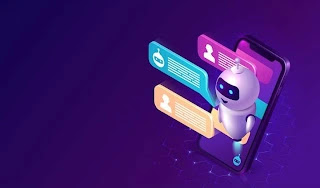Success Story: OpenAI’s ‘ChatGPT’
Recently, ‘ChatGPT’ has been discussed in the Internet world, the full form of which is ‘Chat Generative Pre-trained Transformer’ (Chat Generative Pre-trained Transformer; ChatGPT).
Success Story: OpenAI’s ‘ChatGPT’
As the name suggests, this popular tool can be used to chat or converse. Basically, that is why ChatGPT has been specially trained. As a result, if any question is asked, this AI-based tool can answer much like a human.
However, compared to the chatbots that are currently used for various tasks, ChatGPT is much better. For example, chatgpt can do it even if asked to write something creative in addition to answering questions.
Now many people are writing different types of content starting from song lyrics, articles, news reports or TV episode scripts with chatgpt. In order to receive such various content or information in written form, ChatGPT is only required to provide accurate and specific instructions.
For example, if asked to write a detective story only, ChatGPT will create a story plot based on any type or any time period. In contrast, if ChatGPT was asked to write a story based on the popular detective character Sherlock Holmes, it would write a story. And if you are asked to write a story about Sherlock Holmes in the world of the future, i.e. let’s say 100 years from today, chatgpt can do that too. In short, such a tool has a lot of potential.
Many people realized for the first time that artificial intelligence or AI can do many creative things like humans, through chatgpt. As a result, the company called ‘OpenAI’, which created this chatbot, is now taking a place as a first-rate technology company.
Microsoft is going to invest 10 billion dollars in OpenAI. Microsoft hopes that they can use ChatGPT to improve their browser ‘Bing’ and their popular product ‘Microsoft Office Suite’.
But OpenAI still faces tough challenges. One of the biggest challenges is to make ChatGPT more accurate, bias-free and error-free.
But how did OpenAI come so far as an organization? How is their influence in the technology world today? Let’s know the success story of OpenAI by finding answers to these questions.
History Of OpenAI
OpenAI started its journey in 2015 as a non-profit ‘Artificial Intelligence Laboratory’ based in San Francisco. Their aim was to create ‘Artificial General Intelligence’ or ‘AGI’ by researching artificial intelligence. Basically ‘AGI’ is a type of capability through which AI can understand or learn intellectual tasks like humans. Simply put, their goal was to create software that would be as smart as humans.
OpenAI’s goal at the time of its establishment was to ensure that potential technologies like artificial intelligence were not monopolized by a large organization like Google. That is, with the improvement of AI technology, so that everyone can enjoy its benefits, OpenAI started its journey with that goal. Through this non-profit project, its founders wanted to create a software based on artificial intelligence and make it open source, so that anyone in the world can benefit from this software.
In the beginning, several prominent Silicon Valley figures pledged to invest $1 billion in OpenAI. These included Tesla and SpaceX founder Elon Musk, venture capitalist Peter Thiel and Sam Altman, who later became CEO of OpenAI in 2019.
Elon Musk left the board of directors in 2018 citing his preoccupation with Tesla and SpaceX.
OpenAI takes a very complicated path in creating AI software. They have to use incredibly large amounts of data and powerful neural networks. And this neural network is basically software, the structure of which has been created in accordance with the neurons of the human brain. But it requires a lot of computing power or high capacity computers and highly skilled manpower. It also costs a lot. For example, 2016 tax records show that the salary of one of the first employees working at OpenAI was $1.9 million. Due to these reasons it becomes difficult to run the organization as a non-profit.
So in 2019, OpenAI changed its strategy as a for-profit company. Organizational structures are shaped differently. And the investors are promised that they will get back several times of their investment after a certain period of time. Altman also received a $1 billion investment from Microsoft. In exchange, Microsoft gets the right to commercialize some of OpenAI’s technology by licensing it.
Various Functions Of OpenAI
OpenAI is based on a system that can understand human language. For this, its engineers have taken the help of the vast repositories of written information on the Internet, from which the software learns language usage.
In 2020, they developed a tool called ‘GPT-3’, which can produce text according to instructions in a way that seems believable and reasonable. Inspired by the success of GPT-3, the company started teaching computer code to this software. Thus OpenAI makes a tool called ‘Codex’. The main purpose of Codex is to help programmers write code faster.
From the success of Codex, another open platform called ‘Co-Pilot’ was created. By paying a fixed amount every month, this platform can convert normal instructions given in human written language into computer code. ‘Co-Pilot’ is basically a platform of an organization called ‘GitHub’. And ‘GitHub’ is an organization owned by Microsoft.
OpenAI has also worked on associating scenes or images with language. That is why GPT-3 is trained in such a way that the program finds patterns between words and images. GPT-3 is trained using numerous images and image captions from the Internet. As a result of this effort, in January 2021, OpenAI released a special tool called ‘DALL-E’, which could understand human writing and create images accordingly.
A few days later DALL-E 2 was launched. This program can produce more realistic images than the first version.
Last year, i.e. in 2022, after ‘Dal-e 2’ was opened to the public, this tool quickly caught everyone’s attention. ‘Dal-e 2’ went viral on various social media platforms. People start creating pictures with unrealistic instructions with this tool. Just like how a picture of a hunting dog in space would look like on glass, after giving the instructions, ‘Dal-e 2’ can make a high-quality picture instantly. Public can use this tool by personally paying certain amount of money. Besides, various organizations are also able to use this technology in their apps in exchange of money.
Then in November 2022, OpenAI opened ChatGPT. The chatbot is more sophisticated and advanced than its previous versions. It quickly became popular as it could write much like a human. Chatgpt can talk about complicated topics like religion, write essays, write poetry or even write computer code.
However, this chatbot gets many simple information wrong. Chatgpt wrote racist and sexist articles while answering many questions. And there has been a lot of criticism about it. Also, many fear that students can use this tool to do their assignments.
This year, i.e. in January 2023, around 100 million people have actively used ChatGPT.
Reasons for people’s interest in
ChatGPT And What Silicon Valley Thinks About It
The emergence of ChatGPT was suddenly a huge breakthrough in the field of artificial intelligence. At least that is the idea created among common people. Such use of artificial intelligence or AI by creating creative images or text as per instructions has surprised many.
According to some experts in the field of technology, the future of several types of professionals such as journalists and screenwriters may be threatened after the arrival of ChatGPTT. However, many people are still in doubt about ChatGPT’s ability to make serious mistakes while writing news.
Silicon Valley, however, is not exactly calling this development anything new. Big tech companies like Meta and Google have been working on similar technologies. They have exposed some of these technologies to a limited extent. Some other technologies have been removed after they were introduced to the market due to problems.
However, according to OpenEye’s strategy, ChatGPT is now being used by millions of people around the world. And despite the risk of spreading wrong or biased information, common people have been able to use AI software very easily.
Meanwhile, as people’s interest in ChatGPT has increased, companies like Google and Meta are competing to bring their own AI products to the market. Their aim now is to open it for human use in the shortest possible time. Recently, Google has opened its AI product ‘Bard’, which works much like ChatGPT.
Along With OpenAI, There Are Others Who are Working On Artificial Intelligence On A Large Scale
Many companies in the technology sector are working on artificial intelligence. Google started working on artificial intelligence early on. Some of their work was similar to ChatGPT’s activities. At that time Google developed a language model called ‘LaMDA’. And a former Google engineer claimed that this language model also has human emotions.
Again, a startup named ‘Stable Diffusion’ has released its own version that works in the same way that OpenAI’s Dal-e works. However, the usage policy of this platform is much more relaxed than that of OpenAI.
Last year, a research lab named Midjourney developed a program called ‘Text to Image’, that is, a program to create images from text. An artwork made with Midjourney won an award in a painting competition held at the Colorado State Fair in August of last year. Then there was a lot of controversy about this incident.
Again, in November last year, Meta launched their AI tool called ‘Galactica’. However, Galactica was removed within 3 days of its release due to criticism of its flaws. A few months ago, Meta launched another chatbot named ‘Blenderbot 3’. This chatbot has also been accused of making racist comments. Again in 2016, Microsoft’s chatbot ‘Tay’ (Tay) was removed within a day of bringing it to the market due to racist comments.


